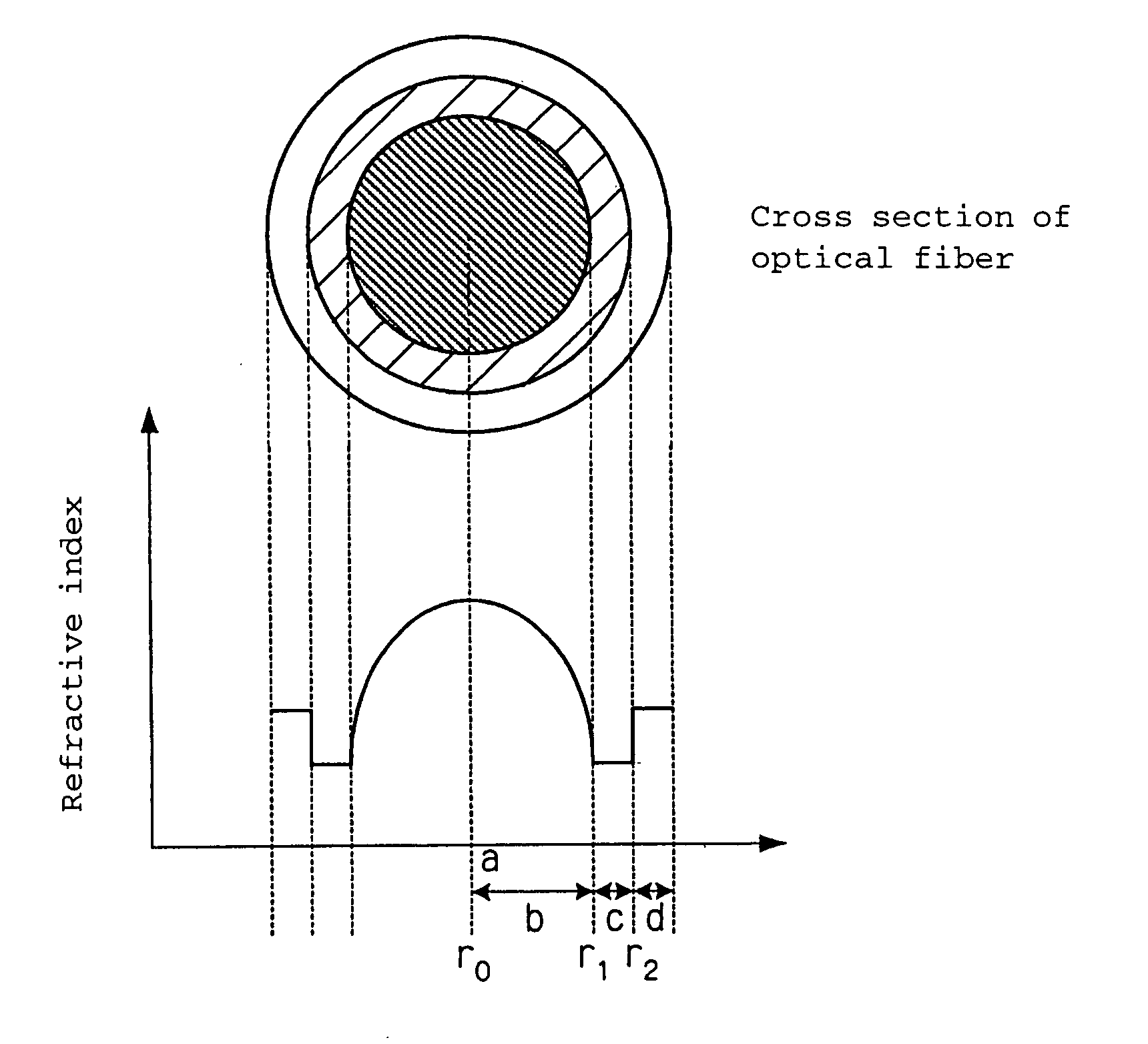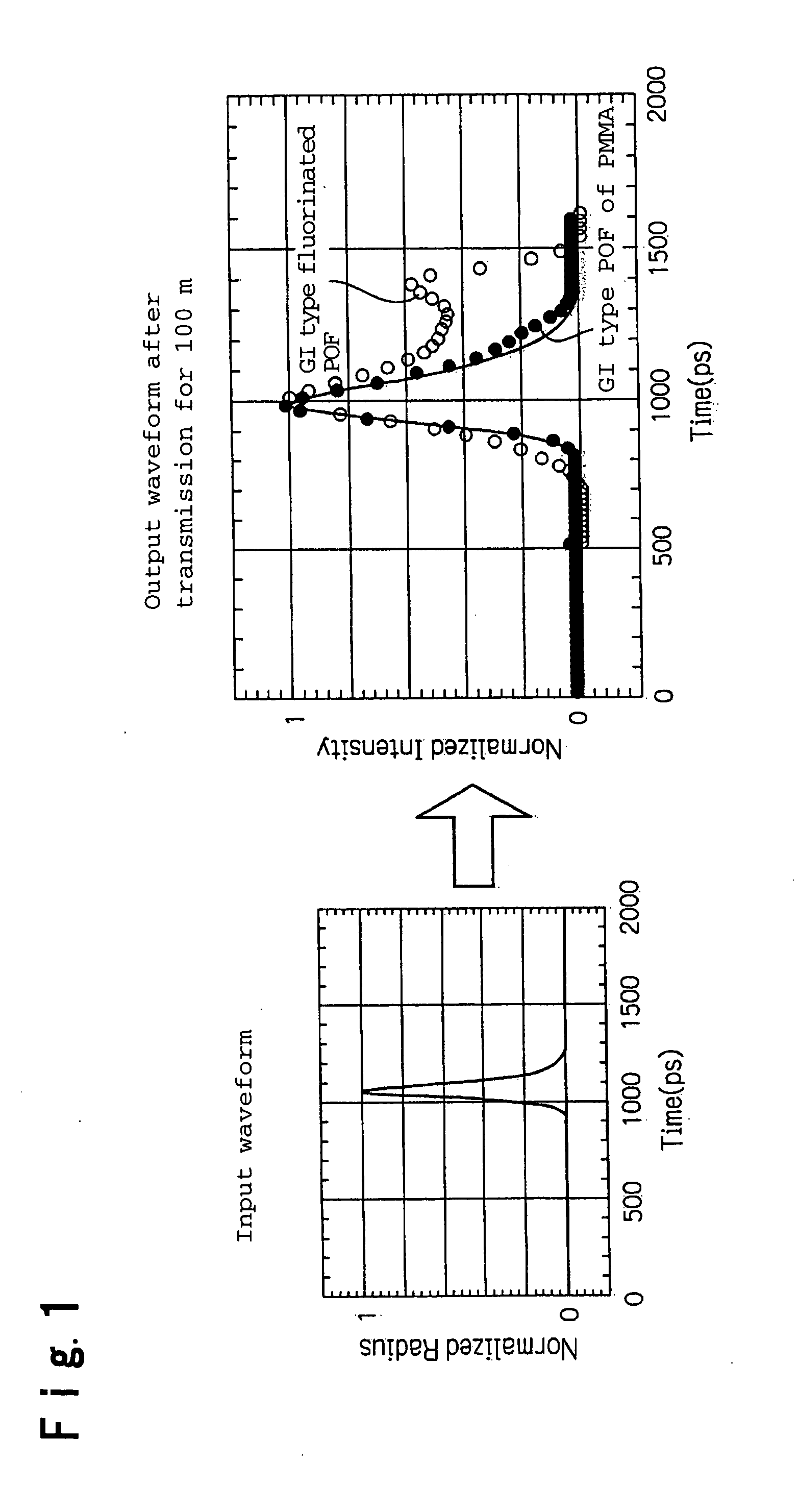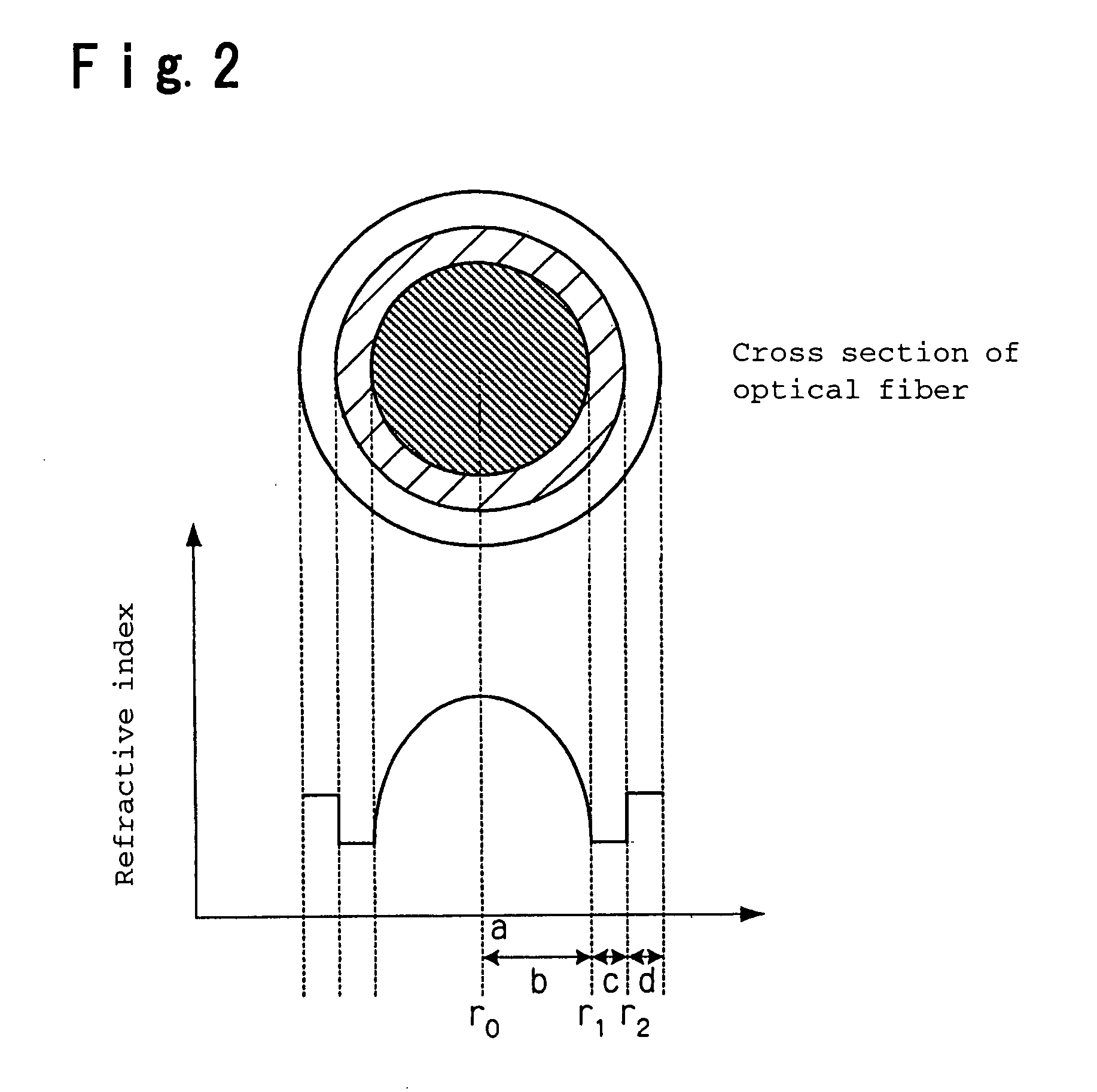Plastic optical fiber
a technology of optical fiber and plastic fiber, applied in the field of plastic optical fiber for communication, can solve the problems of high cost, high order mode dispersion, and extreme weakness of bending
- Summary
- Abstract
- Description
- Claims
- Application Information
AI Technical Summary
Problems solved by technology
Method used
Image
Examples
example 1
[0166] Preparation of W type POF-1
[0167] Into a glass tube having a length of 500 mm and an inner diameter of 22 mm, 99 g of methyl methacrylate (referred to simply as MMA), 11 g of benzyl methacrylate (referred to simply as Bz-MMA), 470 μl of t-butylperoxy-2-ethyl hexanoate and 360 μl of n-butyl mercaptan were filled. After sealing the upper end, the tube was held horizontal and heated at 70° C. for 4 hours while rotating it at 300 rpm, whereupon the rotation was stopped and polymerization was carried out under heating at 90° C. for 20 hours, to obtain a cylindrical container made of a methyl methacrylate / benzyl methacrylate copolymer.
[0168] One end of this container made of the methyl methacrylate / benzyl methacrylate copolymer, was sealed, and 60 g of MMA, 300 μl of t-butylperoxy-2-ethyl hexanoate and 240 μl of butyl mercaptan were filled. After sealing the upper end, the container was held horizontal and heated at 70° C. for 4 hours while rotating it at 3,000 rpm, whereupon the...
example 2
[0203] 20 g of perfluoro(3-oxa-1,6-heptadiene) (referred to simply as PBVE), 20 g of perfluoro(4-methyl-3-oxa-1,6-heptadiene) (referred to simply as PBVE-4M) and 500 ml of (CH3)2CHOCOO)2 as a polymerization initiator, were charged into a glass tube, freeze-deaerated and then polymerized under rotation at a high speed. A hollow tube thus prepared was taken out from the glass tube to obtain a tube made of a polymer having a number average molecular weight of about 1×105. Into the hollow portion of this tube, 10 g of PBVE-4M and 100 ml of (CH3)2CHOCOO)2 as a polymerization initiator, were added, and after sealing, polymerized under rotation at a low speed to obtain a hollow tube.
[0204] Further, into this hollow tube, 10 g of PBVE-4M, 1 g of a CTFE oligomer as a non-polymerizable compound and 100 ml of ((CH3)2CHOCOO)2 as a polymerization initiator, were added, and after sealing, polymerized.
[0205] A POF preform thus prepared was melt-spun to obtain an optical fiber having a diameter ...
example 3
[0206] 525 g of PBVE, 225 g of perfluoro(4-chloro-3-oxa-1,6-heptadiene) (referred to simply as PBVE-4C1), 4 kg of deionized water, 260 g of methanol and 3.7 g of ((CH3)2CHOCOO)2 were charged into a glass flask having an internal capacity of 5 L. The interior was substituted by nitrogen and then, suspension polymerization was carried out at 40° C. for 22 hours to obtain 690 g of a polymer having a number average molecular weight of about 5×104. This polymer was treated at 250° C. for 5 hours in an atmosphere of a fluorine / nitrogen mixed gas (fluorine gas concentration: 20 vol %) to obtain a polymer excellent in light transmittance and heat stability (hereinafter referred to as polymer A1).
[0207] Polymer A1 is charged into a sealed glass tube, and a cylindrical tube made solely of polymer A1 was prepared by melt molding. The refractive index of polymer A1 was 1.35.
[0208] On the other hand, in the same manner as in the preparation of polymer A1 except that use of PBVE and PBVE-4C1 wa...
PUM
 Login to View More
Login to View More Abstract
Description
Claims
Application Information
 Login to View More
Login to View More - R&D
- Intellectual Property
- Life Sciences
- Materials
- Tech Scout
- Unparalleled Data Quality
- Higher Quality Content
- 60% Fewer Hallucinations
Browse by: Latest US Patents, China's latest patents, Technical Efficacy Thesaurus, Application Domain, Technology Topic, Popular Technical Reports.
© 2025 PatSnap. All rights reserved.Legal|Privacy policy|Modern Slavery Act Transparency Statement|Sitemap|About US| Contact US: help@patsnap.com



